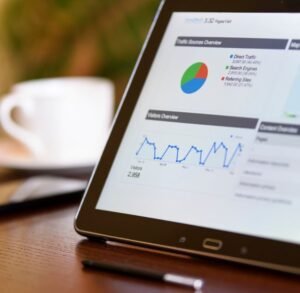In the creative industry, seamless collaboration between designers and clients is crucial for project success. However, managing design requests, feedback loops, and approvals manually can lead to delays, miscommunication, and inefficiencies. This is where ERPNext comes in, offering a centralized platform to streamline design project management, client communication, and workflow automation.
In this blog, we’ll explore how ERPNext enhances collaboration between designers and clients, making projects more efficient and ensuring successful outcomes.
1. Centralized Project Management for Design Teams
ERPNext provides a dedicated project management module that allows design teams to plan, track, and execute projects efficiently.
✔ Project Dashboard: A single view for all ongoing design projects
✔ Task Management: Assign and track project milestones, deadlines, and revisions
✔ Real-Time Updates: Clients and designers stay informed on progress
✔ File & Asset Sharing: Easily upload and access design files, mockups, and final versions
2. Streamlined Client Communication & Feedback
Effective communication is key to a successful design project. ERPNext integrates multiple communication channels to enhance client-designer collaboration:
✔ Integrated Messaging & Notifications: Clients can provide instant feedback within the system
✔ Approval Workflows: Structured approval processes ensure smooth sign-offs
✔ Version Control: Track design iterations to avoid confusion
✔ Automated Reminders: Clients receive reminders for pending approvals
3. Efficient Quotation & Invoice Management
With ERPNext, designers can manage their financial transactions seamlessly, ensuring transparency between clients and service providers.
✔ Automated Quotation Generation: Clients receive detailed cost breakdowns
✔ Invoice Tracking & Payments: Manage invoices, payment schedules, and due dates
✔ Expense & Budget Management: Track project costs and stay within budget
✔ Subscription-Based Services: Manage ongoing design contracts with recurring invoices
4. Better Resource & Time Management
ERPNext provides tools to optimize resource allocation and manage designer workloads effectively.
✔ Time Tracking: Measure how long tasks take to improve efficiency
✔ Workload Distribution: Assign tasks to available designers to avoid burnout
✔ Deadline Management: Set realistic timelines based on project complexity
✔ Client Reporting: Provide clients with progress reports and timelines
5. Secure File Storage & Asset Management
Managing design assets like logos, branding elements, illustrations, and UI designs can be challenging. ERPNext simplifies asset management with:
✔ Cloud-Based File Storage: Access files anytime, anywhere
✔ Folder Organization: Categorize assets by project, client, or design type
✔ User Access Control: Restrict access based on team roles and client permissions
✔ Auto-Backup & Versioning: Prevent data loss and track design iterations
6. Improved Collaboration with Third-Party Tools
ERPNext seamlessly integrates with popular design and collaboration tools like:
✔ Adobe Creative Cloud (Photoshop, Illustrator, XD)
✔ Figma & Sketch for UI/UX design collaboration
✔ Slack & Microsoft Teams for instant messaging
✔ Google Drive & Dropbox for additional storage
7. Enhanced Reporting & Client Transparency
ERPNext’s reporting tools allow real-time insights into project progress, financials, and client satisfaction.
✔ Customizable Dashboards: Track key performance indicators (KPIs)
✔ Client Reports: Generate project reports with milestones and completion status
✔ Design Revision History: Keep a transparent record of changes for reference
✔ Performance Metrics: Measure team efficiency and project profitability
This helps both designers and clients stay informed, making collaboration more structured and transparent.
Conclusion: Why ERPNext is a Game-Changer for Designers & Clients
ERPNext is more than just an ERP—it’s a collaborative platform that bridges the gap between designers and clients. By streamlining communication, project tracking, payments, and asset management, it eliminates inefficiencies and enhances workflow automation.
If you’re looking for a smarter way to manage your design projects, ERPNext is the ideal solution. 🚀



